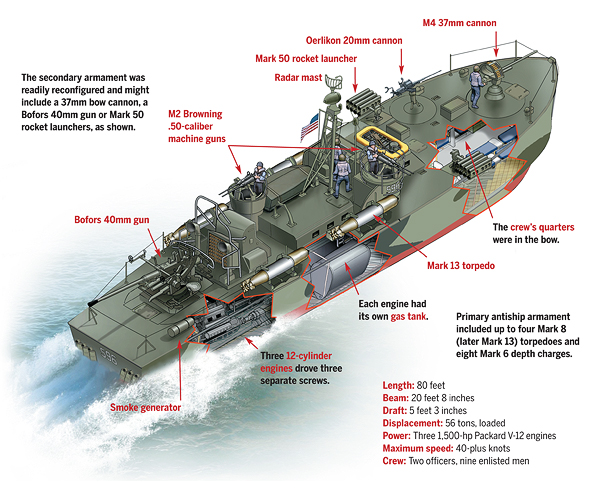
During World War II the Elco Naval Division of the Electric Boat Co., in Bayonne, N.J., built nearly 400 patrol torpedo, or PT, boats for the U.S. Navy. Of those, 326 were 80 feet long—the largest in their class. These fast, light vessels, their hulls made of double-planked mahogany, have been portrayed on-screen torpedoing larger Japanese warships in daring night raids in the Pacific. In reality, they seldom succeeded in such attacks. An exception was PT-137, which during the Battle of Surigao Strait on Oct. 25, 1944, landed a disabling hit on the Japanese light cruiser Abukuma, which fell behind its fleet and was sunk by B-24 bombers the next morning. But perhaps the best known of the Elco boats was the ill-fated PT-109, skippered by Lt. j.g. John F. Kennedy, future 35th president of the United States. On the night of Aug. 2, 1943, the Japanese destroyer Amagiri caught PT-109 idling in a strait off the Solomon Islands and rammed the smaller vessel, killing two crewmen and injuring Kennedy.
While their primary mission was to attack enemy shipping, what PT boats did more often was to provide fire support for troop landings, lay and destroy mines, carry out rescues and harass enemy coastal supply lines, a mission that earned them the nickname “barge busters.” In the Mediterranean Sea they wrought similar havoc on heavily armed German supply barges called F-lighters as well as their torpedo-laden German counterparts, the E-boats. At war’s end the Navy stripped, beached and burned most PT boats, but one 80-foot Elco, PT-617, survives at the Battleship Cove Naval Museum in Fall River, Mass.




